|
MILTON CANIFF
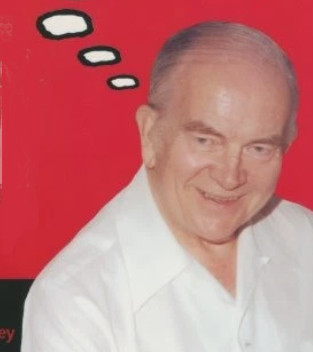
Milton Arthur Paul Caniff |
-
Milton Caniff (1907-1988) was an American cartoonist known for the
Terry and the Pirates and Steve Canyon comic strips.
- Caniff was born in Hillsboro, Ohio.
where he drew cartoons for local newspapers while studying at Stivers High School (now Stivers School for the Arts) in Dayton, Ohio.
- Caniff’s first job was drawing cartoons for the Boy Scout
page in The Dayton Journal-Herald.
- Caniff's drawings look all the more impressive, considering he was actually left-handed but wrote his dialogues with his right
and to avoid smearing his work he worked from right to left.
|
His interest of the Boy Scouts would lead him to become an Eagle Scout. In 1945 he would also create “Kit Cricket”, the mascot of Cricket Hollar, a camp of the Boy Scouts under the jurisdiction of the Dayton-Miami Valley Council.
(Carillon Historical Park)
|
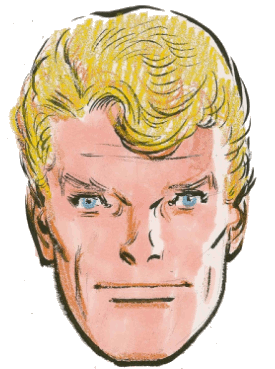
Steve Canyon |
- He attended Ohio State University from the fall of 1925 until he graduated in 1930
with a degree in Journalism.
-
Bleeds Scarlet and Gray the school colors.
- The surname Caniff means 'son of a black hound' in
Gaelic and 'penknife/pocketknife' in French.
- He was
nicknamed 'Rembrandt of the Comic Strip.'
|
In my five years [at OSU], I have run up a debt I will
never liquidate. But I shall try, even though there
can be no price tag on brain surgery from within.
(library.osu.edu)
|
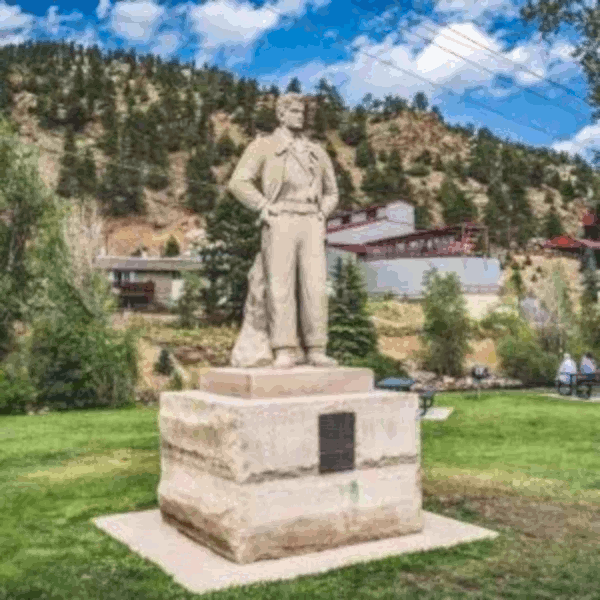
Steve Canyon in
Idaho Springs |
- The CIA/US Air
Force covert air war in Laos during the Vietnam War was
unofficially called the 'Steve Canyon Program.'
- A statue of Steve Canyon was erected in Idaho Springs, Colorado, and a nearby mountain canyon was renamed
'Steve Canyon.'
- Cartoonist Milton Caniff, who created Steve Canyon, would visit Idaho Springs and hang out at the Hanson Lodge, but he had nothing to do with the renaming or the statue
which was carved out of Indiana limestone for a cost of
$12,000.
- Idaho Springs, however, 'in appreciation for his enthusiasm,' gave Caniff a gold mine.
- The larger-than-life statue of the cartoon character Steve Canyon was dedicated on July 8, 1950, by Colorado Governor Ed Johnson.
|
Caniff’s ties with this mountain community go back to 1948 when it was decided to change the name of Squirrel Gulch to Steve Canyon. Steve Canyon actually is a member of the Liberty Bell Group – officially the 327 Troop Carrier Squadron. Caniff applied for Steve’s membership when the squadron was formed in the fall of 1949.
(historicidahosprings.com)
|
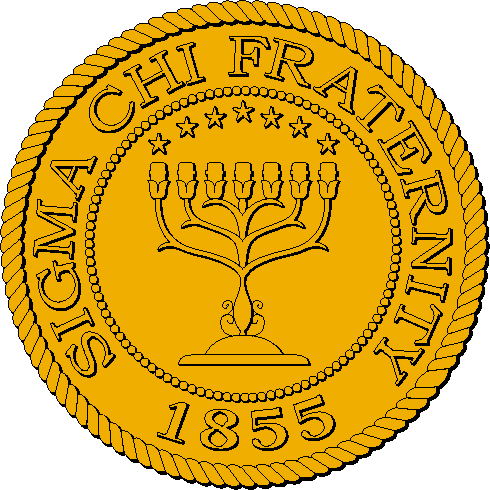
Sigma Chi with
Jewish Menorah |
- While at OSU, Caniff was a member of the Sigma Chi fraternity
which has Masonic roots.
- He contributed artwork to The Magazine of the Sigma Chi, as well as to
The Norman Shield, the fraternity’s pledgeship and reference manual.
- He was also vice president of Scarlet Mask, a male acting troupe at OSU.
|
A menorah with seven branches, or seven lamps, has several symbolic meanings, most prominently representing the seven days of creation, the seven classical planets, and the original seven-branched lampstand of the Temple in Jerusalem. Unlike the nine-branched menorah used for Hanukkah, the seven-branched version is a symbol of Judaism in general, representing completeness and divine presence.
(Assistant)
|
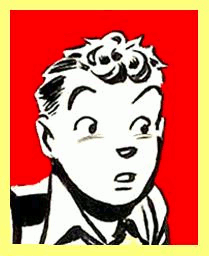
Dickie Dare |
- In 1932, Caniff moved to New York City to accept an artist job with the Features Service of the Associated Press
where he was on general assignment art for several months, drawing the comic strips
Dickie Dare and The Gay Thirties.
- The cinematic layouts and the impressionistic inking style that Caniff perfected influenced a whole generation of comic strip and comic book artists.
|
In 1941 Caniff precipitated a national incident by permitting one of his characters the almost unheard-of comic-strip prerogative of dying. The victim in this case was one Raven Sherman
who might be around today, since Caniff had not always planned to get rid of her. But as he says now, with a faint trace of ghoulishness,
'I decided it was time to let somebody die.'
Caniff not only killed Miss Sherman in cold syndicated blood, but he duped his readers while he arranged her death. Originally, Raven had not been a very pretty girl, and for months Caniff had worked to prepare her for her ultimate demise, gradually softening her sharp chin and redoing her hair. By the time she finally died, Raven was exactly as beautiful as sacrificial heroines are supposed to be, and only a handful of readers suspected what Caniff had been doing to them.
(encyclopedia.com)
|

Soft porn by 1938
As well as what
could be used as black
magic when he
murdered characters |
- Caniff always took his illustrations to the edge and
oftentimes would be denied approval to publish.
- One of
Caniff's depictions of Burma he created in 1938 virtually
showed her in a strip tease covered by a silk sheet where you
could literally see her naked body.
- He soon followed this
up with a recap that showed main character, Pat Ryan, in a
male version, same theme.
- Artists like Caniff had a constant battle going with the
syndicate who censored their work, however, they continued on
and today there seem to be no limits.
|
Slipping a bit of light erotica into the back pages of the buttoned-down newspaper medium was something of a sport among many comic strip artists throughout the last century. Milton Caniff understood the better than anyone the potential here for serving the needs of a daily adventure strip while also pushing the boundaries of the conservative editorial propriety of national syndication.
(panelsandprose.com)
|

Predecessor to
Playboy - Miss Lace |
- To contribute to the war effort, Caniff decided to draw
a weekly comic strip called Male Call and make it available at no cost to
military camp newspapers.
- It premiered October 11, 1942,
and focused on beautiful adventuress Burma, and she was seen in single-page situations rather than a continuity storyline.
- The military spin-off version of Terry and the Pirates
came to an end because the syndicate
didn't like him using their character.
- Caniff changed
Lace from a brunette to a blonde and continued
Male Call until seven months after V-J Day, bringing it to a conclusion on March 3, 1946.
- There is a Masonic flavor to everything Caniff created.
|
Al Capp may have been the best at skirting official
prurience with his bevy of buxom beauties of Dogpatch.
His ability to make sexiness cartoonish yet genuinely
titillating helped define erotic caricature for
generations of illustrators. in Esquire, But as we see
here, cheesecake always had a place even in the most
family oriented media if artists could find ways of
making it incidental to larger narrative aims.
Voyeurism, properly handled, is one fetish that
Americans have always been ready to mainstream.
(panelsandprose.com)
|
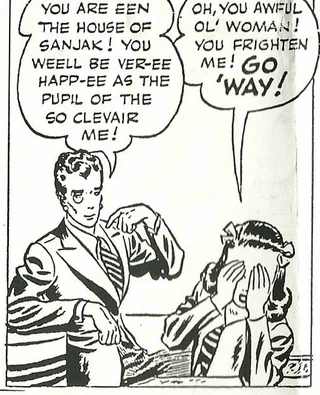
Sanjak at work |
- Panel from Terry and the Pirates in 1939 featured Sanjak, the first lesbian character in comics.
- Beginning in 1995, Dargaud published a comic series entitled
Pin-Up, aimed mainly at adults, that had an artist
named Milton as a character.
- Dargaud also used Miss Lace in combination with Mata
Hari for one of his racy characters.
|
Although he never explicitly said she was lesbian (since admitting the existence of gay people in the 30's was a great way to get your strip dropped from every paper in the country), Milton Caniff made it pretty clear. The French accent, monocle and short hair were all lesbian stereotypes at the time.
(IHad360K)
|

353rd Special
Operations Wing |
- Milton Caniff designed 70 new insignia for the U.S. Air Force and submarine crews, although the "70" likely refers to the 1970s, when Caniff was an active supporter of military heraldry.
- For the Air Force, Caniff designed the emblem for the 553rd Reconnaissance Wing (later the 353rd Special Operations Wing).
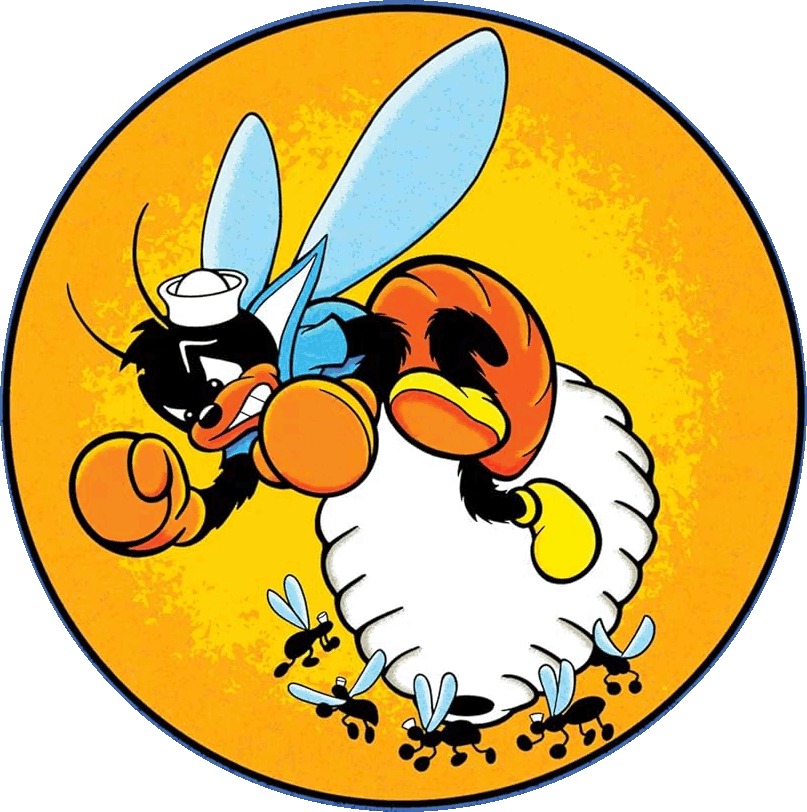
Hellcats of the USS
Hornet |
- Caniff is also known for his WWII night fighter squadron emblems, like the one for the Hellcats of the USS Hornet.
- He also lent his skills to government training manuals such
as character Steve Canyon in How to Spot a Jap, pocket guides, and bond selling.
|
Steve Canyon went to Vietnam three
times, and in 1967 encountered an obnoxious war protester named Felicia Lymph
who distinctly resembled Jane Fonda.
Caniff’s hard-core fans loved it, but for
the first time, Caniff was out of step with
public opinion in his continued support
of the Vietnam War and his pro-military
stance. Readership fell and a significant
number of newspapers dropped the strip.
(airandspaceforces.com)
|
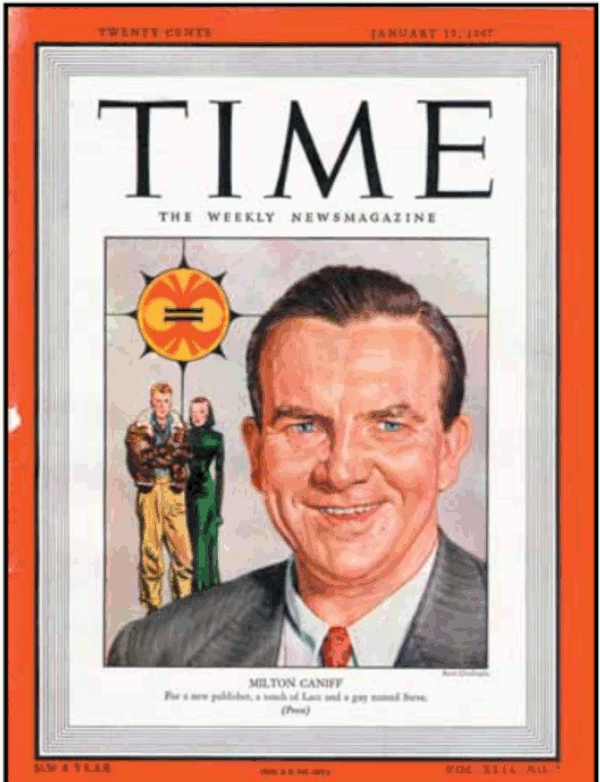
Time Magazine |
- Milton Caniff even made the cover of Time Magazine
in January 1947, for his work on military propaganda in his
cartoons and all the insignia he designed for the military.
- Time
Magazine is notorius
for putting people on its cover and giving them devil horns.
- He also had quite a knack for predicting things before they
happened, like the March 17, 1944, invasion of Burma, which
occurred on March 18.
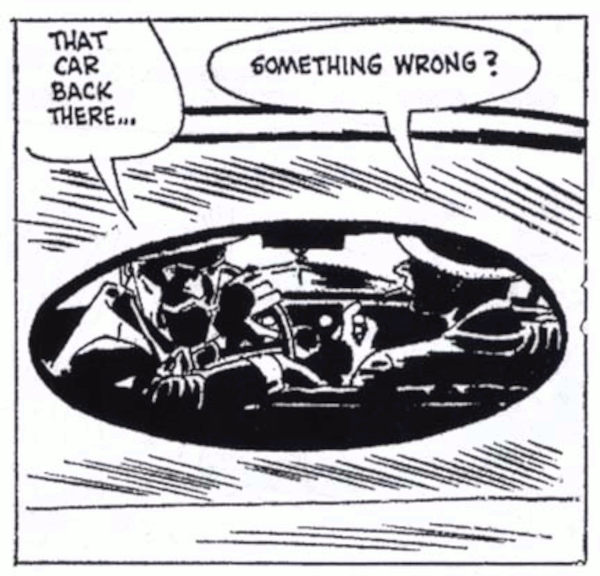
FBI visit |
- The FBI showed up at his door and
he had to pull the strip for a month.
- On another occasion, Caniff claimed the FBI visited him because he accidentally used the actual code name for an Allied radio station in his strip
but he insisted it was an unlucky guess.
|
The comic form is still considered by many to be a
mass medium with little redeeming quality warranting
no serious critical attention. In fact, it's often
been considered destructive, especially for the
adolescent readers at which many comics in the U.S.
market are often aimed. As early as 1910, "vigorous
campaigns were waged by women's clubs, religious
organizations and magazines to eliminate the comic
supplement from the newspaper" This view, which
also became a major issue in the 1950s, persists in
the public arena even today.
(wcgcomics.blogspot.com)
|
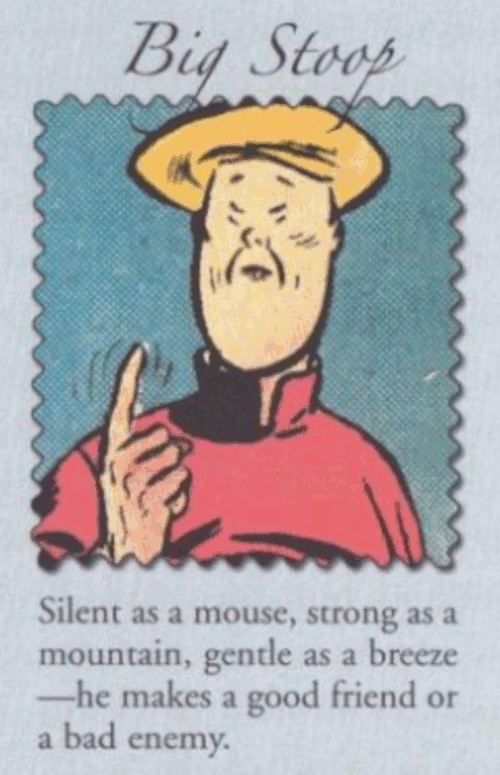
Hints of racism |
- There has also been some negative criticism of Caniff's
work because of what critics consider racist Chinese
caricatures.
- Many are concerned about how to publish some
of these older works for a modern audience.
- Although, in
all fairness, Caniff exagerated and picked out important
'features' on all his long list of characters, no matter their
gender or race, a common theme in comic art.
- But it comes
down to what some feel is that many white men need to consider
the humanity of everyone, not just themselves.
- But we
all know the art form can be horribly abused and downright
mean.
|
In 1984, for instance, an article in Psychology Today discussed the "defeat, cynicism and despair" that seemed to permeate adult comic books An overview of the history of the field reveals, however, that comics, like any other popular form of entertainment, has produced its share of true artists as well as hacks.
(wcgcomics.blogspot.com)
|
|
Milton
Caniff as Paul
Revere |
Milton Arthur Paul Caniff
1907-1988
2/28
4/3 |
Paul Revere
1734-1818
1/1 5/10
|
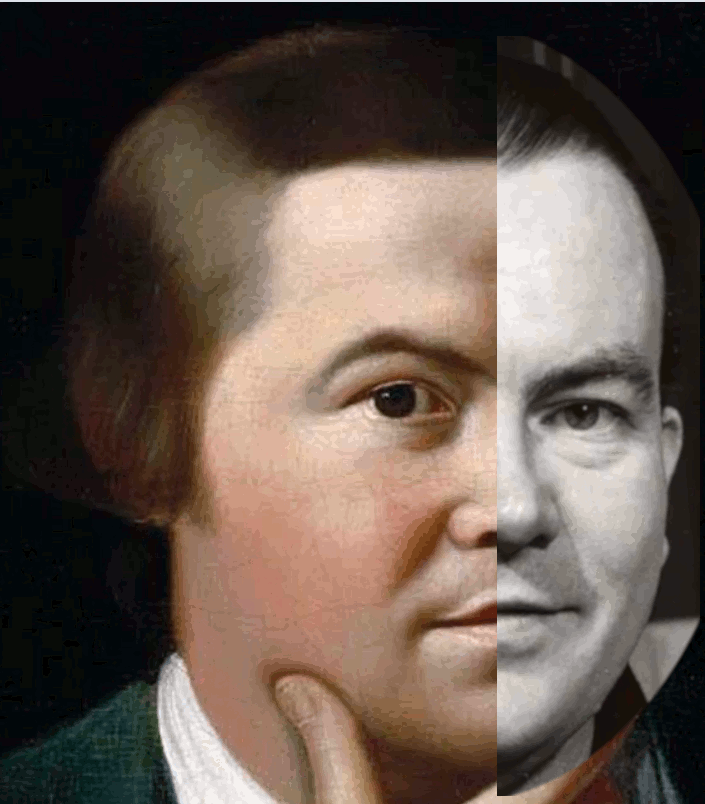 |
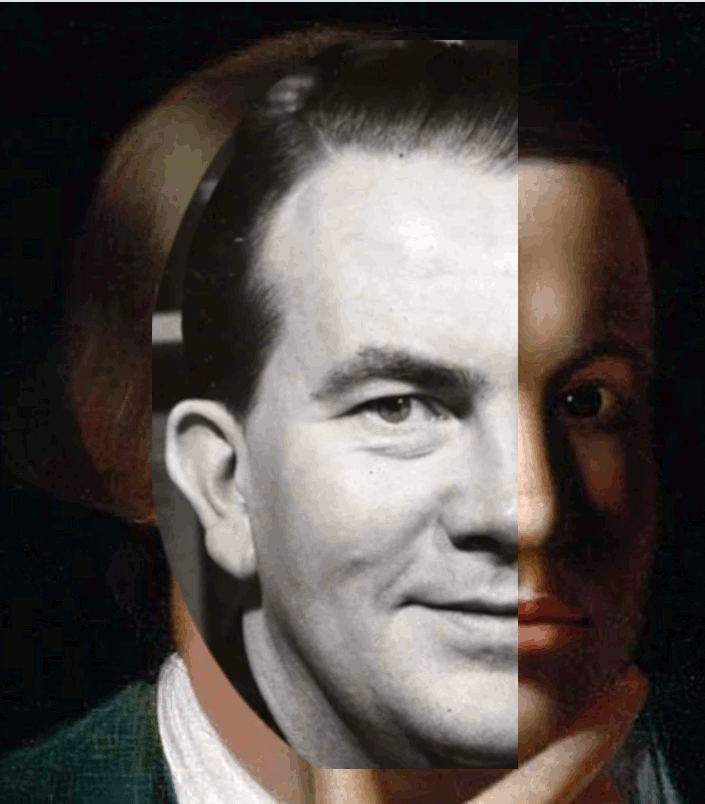 |
Hard to find the right angle
|
|
Milton
Caniff as Rush
Limbaugh |
Milton Arthur Paul Caniff
1907-1988
2/28
4/3 |
Rush Hudson Limbaugh
1951-2021
1/12
2/17
|
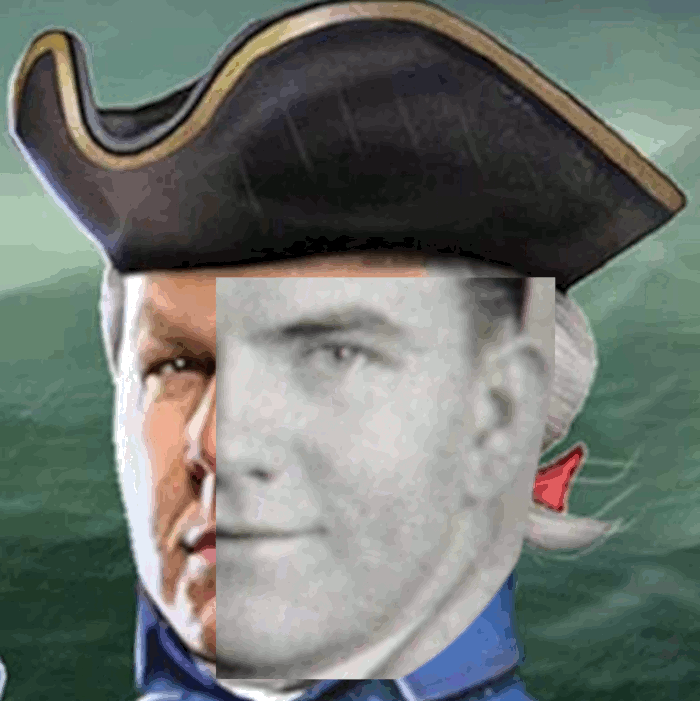 |
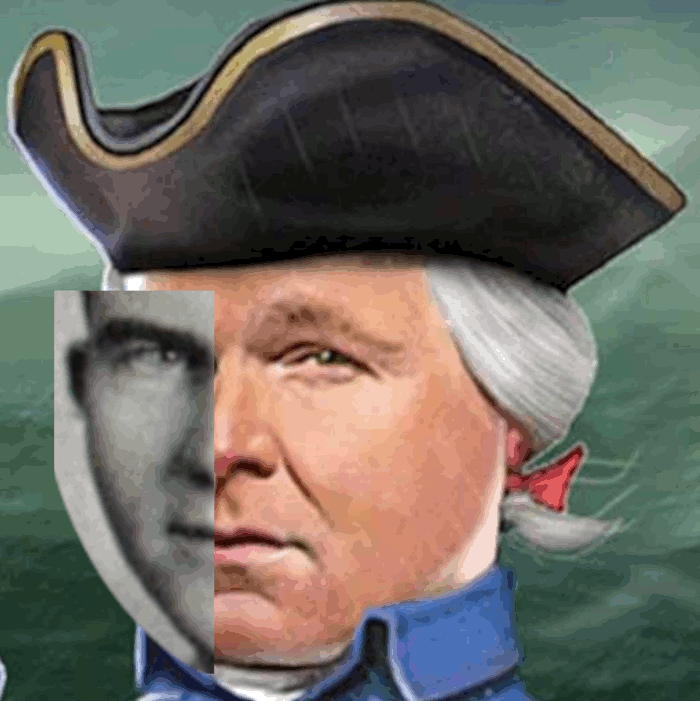 |
|
Hard to find the right angle |
- Many also feel that comics should just tell stories
and skip all the politics.
- Trump played the part of Paul
Revere Dick and the Raiders.
|
|

Rush Limbaugh |
- Caniff graduated to Terry and the Pirates from The
Gay Thirties and Dickie Dare, two strips he did for the Associated Press after being lured to New York from the Columbus, Ohio, Dispatch.
-
Caniff, like Rush Limbaugh, was a native of Missouri, and their shared roots were a further connection between the two figures.
- His full name is Rush Hudson Limbaugh III, and he was known as
'Rusty' growing up.
|
Limbaugh marries for the fourth time while being serenaded by he most famously gay singer in the world, the foolish consistency is consistently foolish.
(Michael Conniff, Contributor)
|
|
Billy
Clinton as Rush
Limbaugh |
William Jefferson (Blythe) Clinton
1946
8/19 |
Rush Hudson Limbaugh
1951-2021
1/12
2/17
|
 |
 |
42nd president
wearing his fat suit and a
little nose putty |
- Rush admitted to Playboy in 1993 that he smoked marijuana twice, inhaled, but didn’t like it.
|
Former President Bill Clinton did not make the admission in 1993, but rather during his 1992 presidential campaign. While running for the Democratic nomination, he stated that he had experimented with marijuana "a time or two" while a Rhodes Scholar at Oxford University in England in the late 1960s.
(Assistant)
|
|
Milton
Caniff as Rush
Limbaugh |
Milton Arthur Paul Caniff
1907-1988
2/28
4/3
Soft porn
cartoonist |
Rush Hudson Limbaugh
1951-2021
1/12
2/17
Republican talk show
|
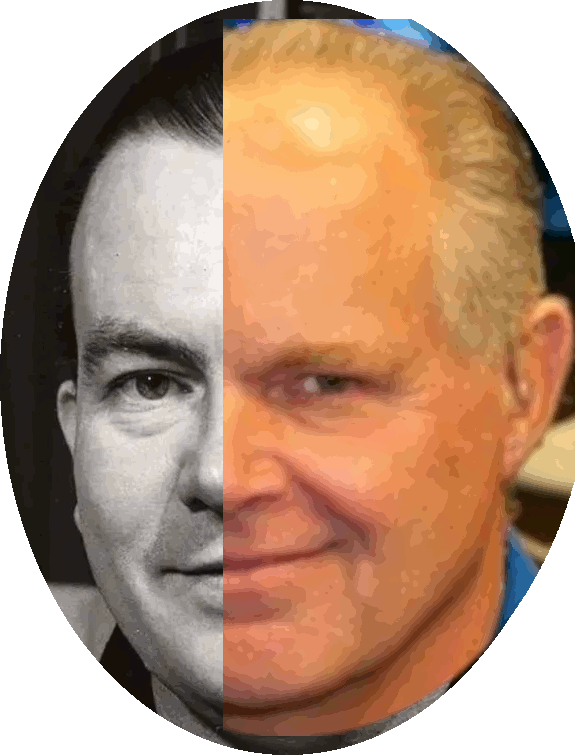 |
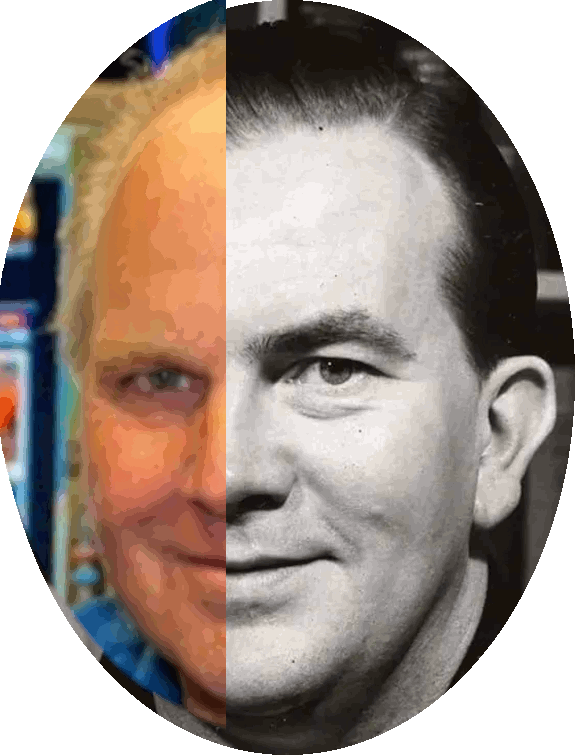 |
|
Republican |
-
|
Billy
Clinton. as Milton
Caniff |
William Jefferson (Blythe) Clinton
1946
8/19 |
Milton Arthur Paul
1907-1988
Soft porn
cartoonist
|
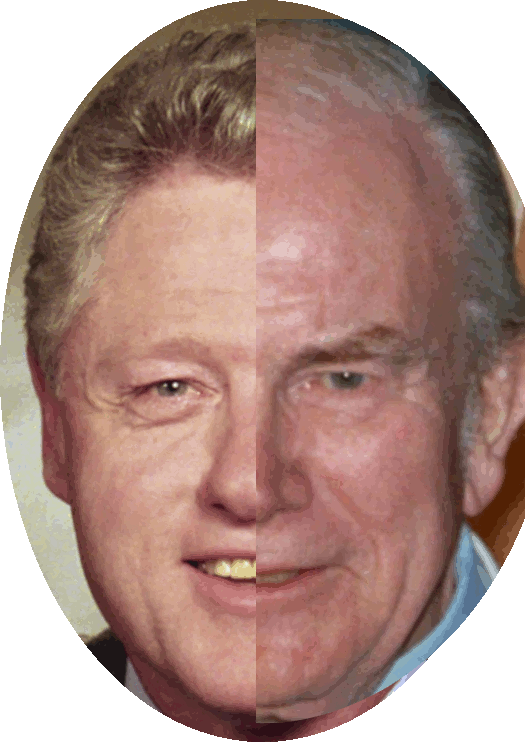 |
 |
|
42nd President |
- Boy Scouts of America (BSA) Troop 55 -
Chesapeake, Virginia
---- Milton Caniff, Comic Strip Artist
'Steve Canyon' (Eagle Scout).
----
Bill Clinton, U.S. President (Cub Scout).
---- Jim Morrison - Rock Legend (Boy Scout).
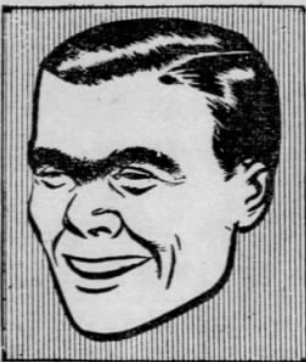
Capt. Dude Higgs |
- Caniff later said that he took inspiration for many of his
'Terry' characters from real people he met at OSU, including his good friend Frank
'Dude' Hennick (OSU class of 1925), who inspired the character of Capt. Dude Higgs.
- Higgs was killed in Shanghai in 1945
and Caniff memorialized his friend in the comic strip with the in-character death of Dude Hennick.
|
|

William F. Buckley |
- Limbaugh and Caniff were apparently the same kind of guy but
Limbaugh also idolized conservative writer William F. Buckley.
|
|

More Rush |
- In interviews, Limbaugh would frequently mention Milton Caniff as a mentor and an inspiration
which shows how much Limbaugh respected Caniff's work and his reputation.
- After Carniff died on April 3, 1988, cartoonist Jules Feiffer said,
'What Astaire applied to dance, Caniff applied to paper.'
|
Milton Caniff was a comic strip artist who had a significant influence on Rush Limbaugh. In his youth, Limbaugh looked up to Caniff, and the cartoonist's work was a factor in Limbaugh's own career path. Limbaugh was an avid reader of Caniff's comic strips, including Terry and the Pirates and Steve Canyon. Caniff's success as a cartoonist inspired Limbaugh to pursue his own career in communications.
(Assistant)
|
|
|
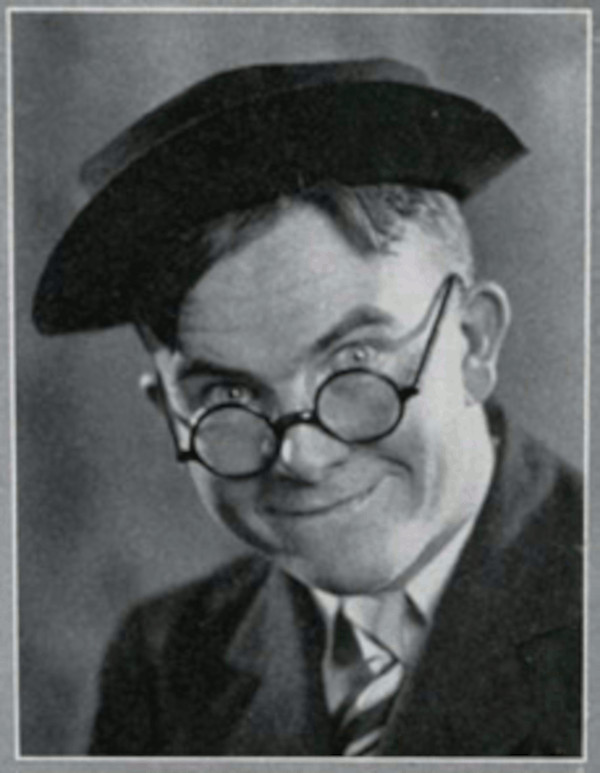
Caniff in costume |
- At the August 1974 OSU Commencement, Caniff was awarded an honorary doctorate of Humane Letters and gave the Commencement address.
- Caniff died on Easter Sunday in 1988 at the age of 81.
- He donated much of his work to the OSU School of Journalism.
|
His papers and artwork became one of the founding collections of the Billy Ireland Cartoon Library and Museum, named for Caniff’s good friend and fellow Columbus Dispatch cartoonist.
(library.osu.edu)
|
|
|
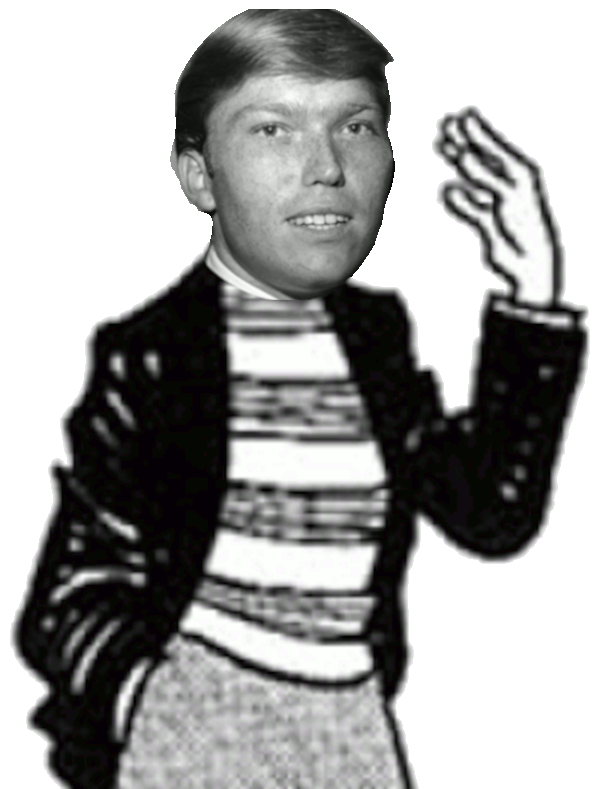
Terry the pirate |
-
Terry and the Pirates was also a favorite of actress
Doris Day and she named her son, Terry P. Melcher after the
strip.
- So the beat goes on.
|
|

